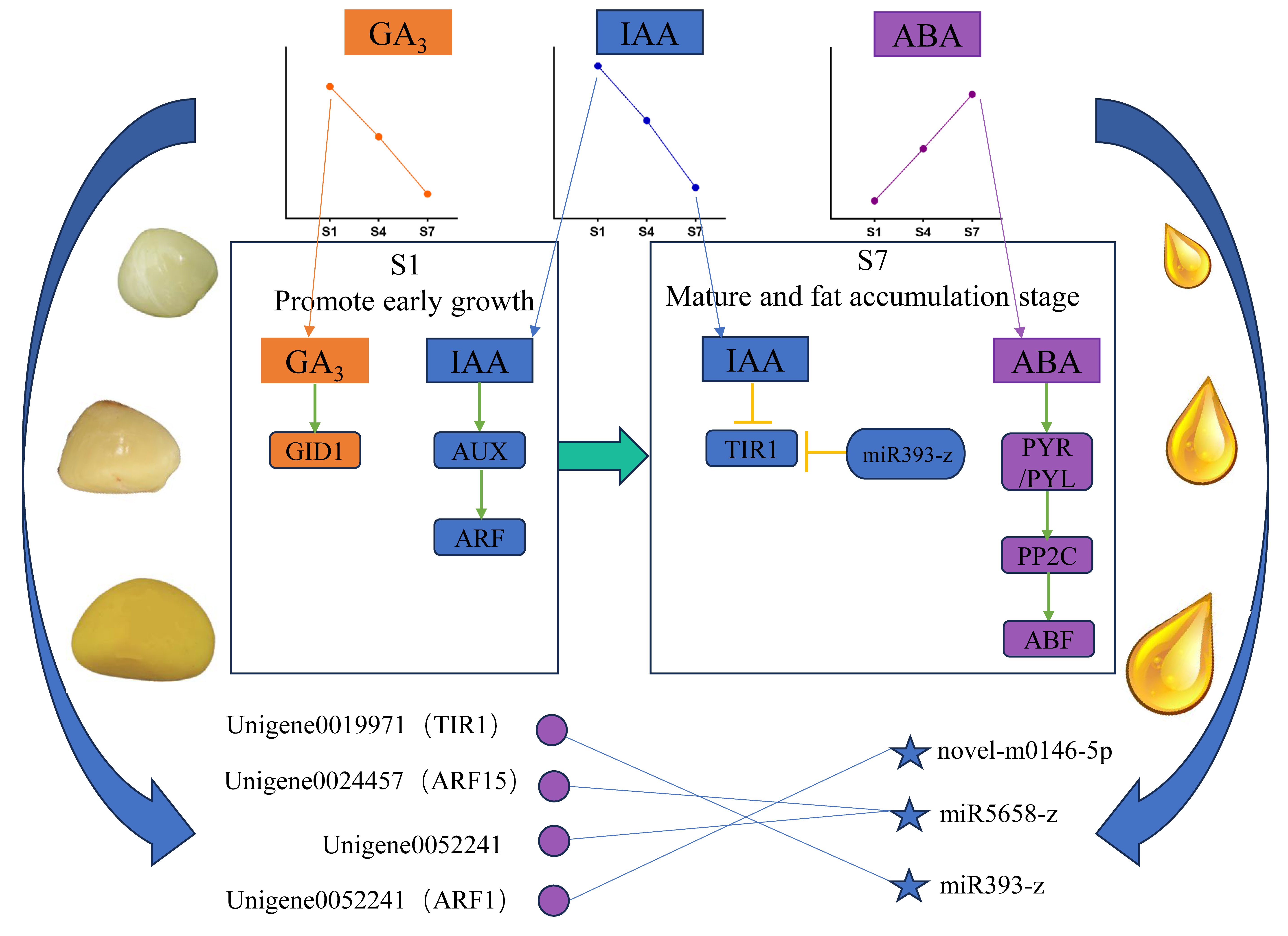Integration of Transcriptome, miRNA-Omics, and Hormone Metabolism Analysis Reveals the Regulatory Network of Camellia drupifera Fruit Maturation
Abstract
Share and Cite
Zhao, J.; Sun, X.; Yao, Y.; Liu, Y.; Yang, D.; Yang, H.; Yu, J.; Zheng, D.; Wu, Y. Integration of Transcriptome, miRNA-Omics, and Hormone Metabolism Analysis Reveals the Regulatory Network of Camellia drupifera Fruit Maturation. Plants 2025, 14, 3282. https://doi.org/10.3390/plants14213282
Zhao J, Sun X, Yao Y, Liu Y, Yang D, Yang H, Yu J, Zheng D, Wu Y. Integration of Transcriptome, miRNA-Omics, and Hormone Metabolism Analysis Reveals the Regulatory Network of Camellia drupifera Fruit Maturation. Plants. 2025; 14(21):3282. https://doi.org/10.3390/plants14213282
Chicago/Turabian StyleZhao, Jin, Xue Sun, Yanqiang Yao, Ya Liu, Dongmei Yang, Huageng Yang, Jing Yu, Daojun Zheng, and Yougen Wu. 2025. "Integration of Transcriptome, miRNA-Omics, and Hormone Metabolism Analysis Reveals the Regulatory Network of Camellia drupifera Fruit Maturation" Plants 14, no. 21: 3282. https://doi.org/10.3390/plants14213282
APA StyleZhao, J., Sun, X., Yao, Y., Liu, Y., Yang, D., Yang, H., Yu, J., Zheng, D., & Wu, Y. (2025). Integration of Transcriptome, miRNA-Omics, and Hormone Metabolism Analysis Reveals the Regulatory Network of Camellia drupifera Fruit Maturation. Plants, 14(21), 3282. https://doi.org/10.3390/plants14213282







